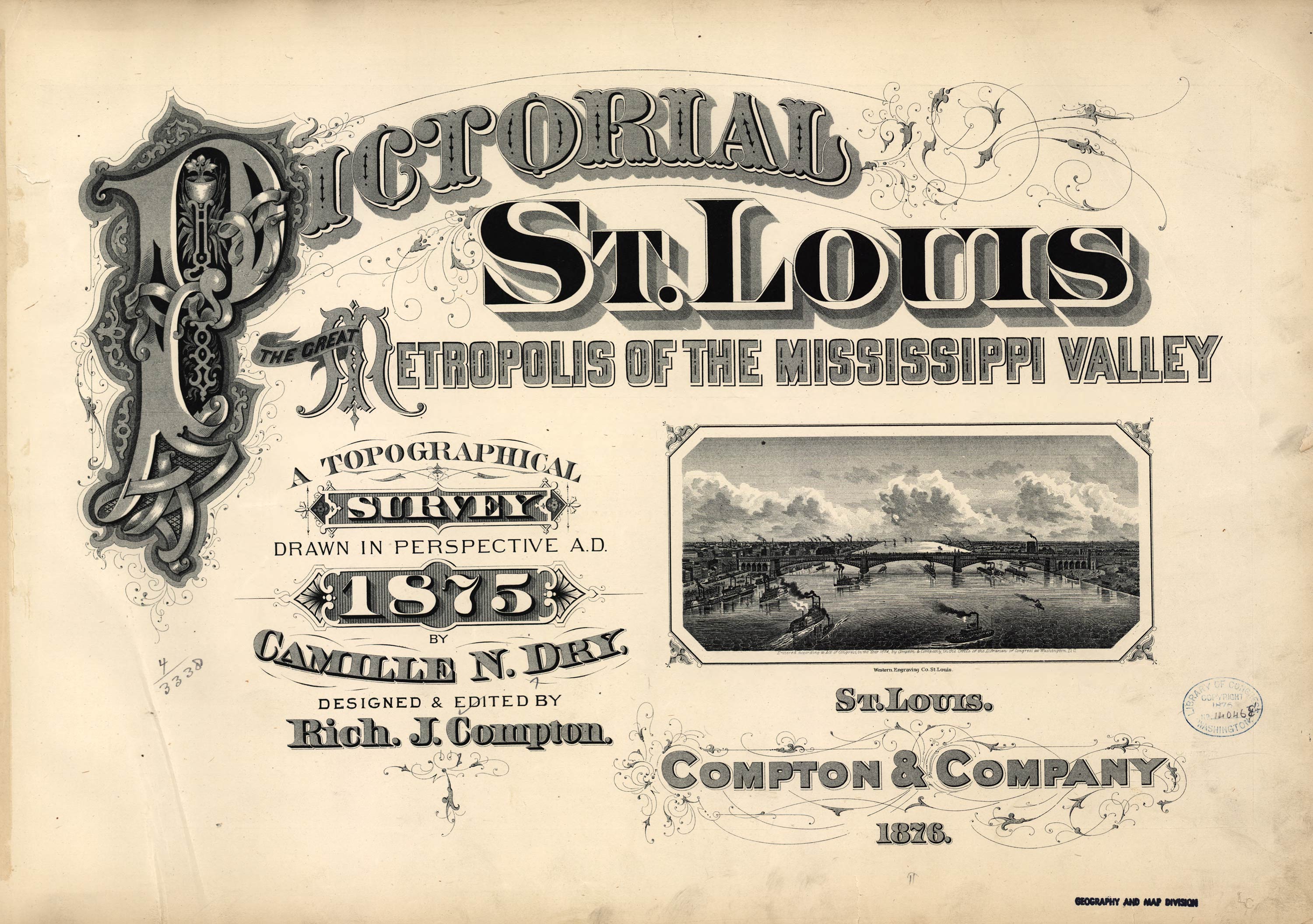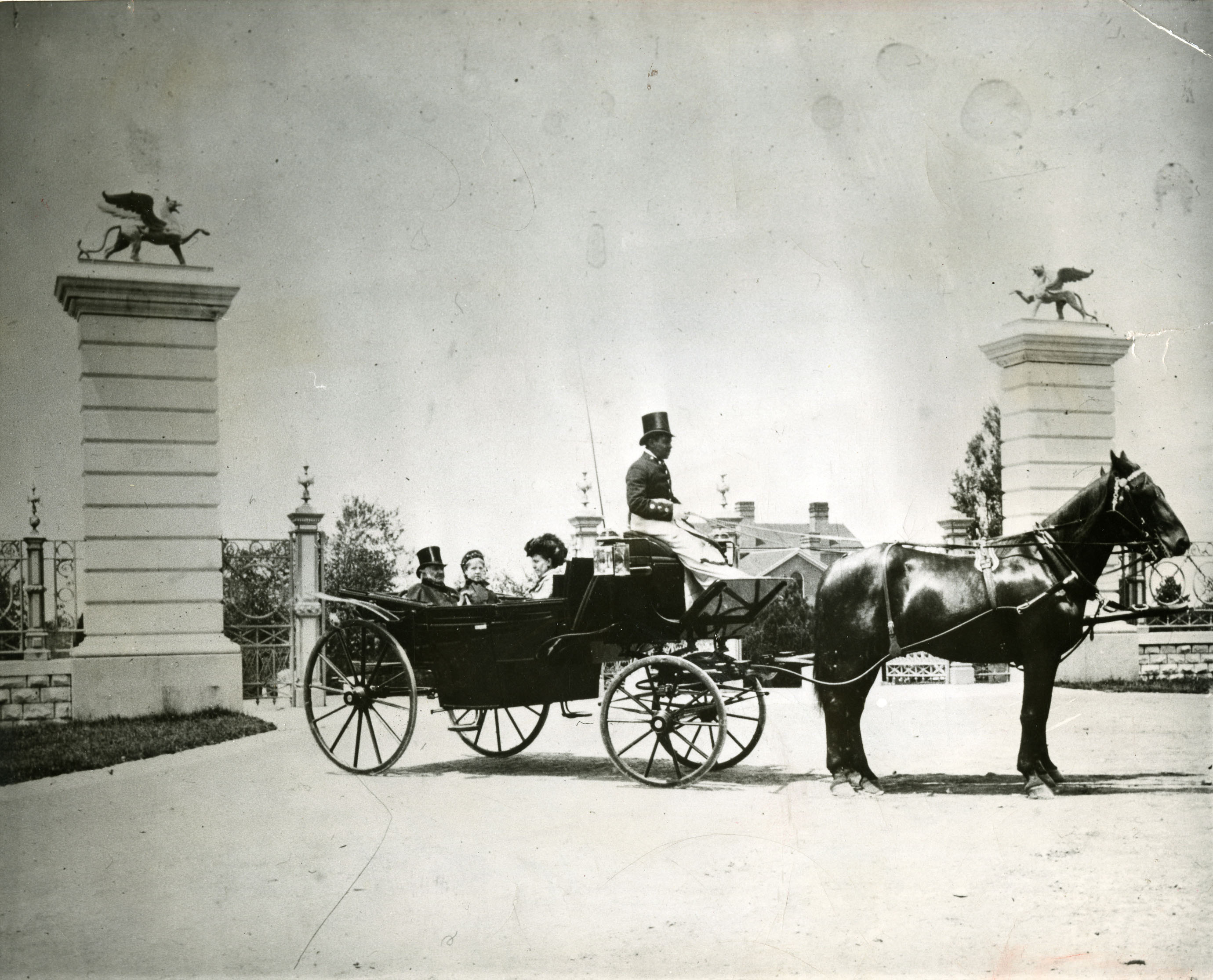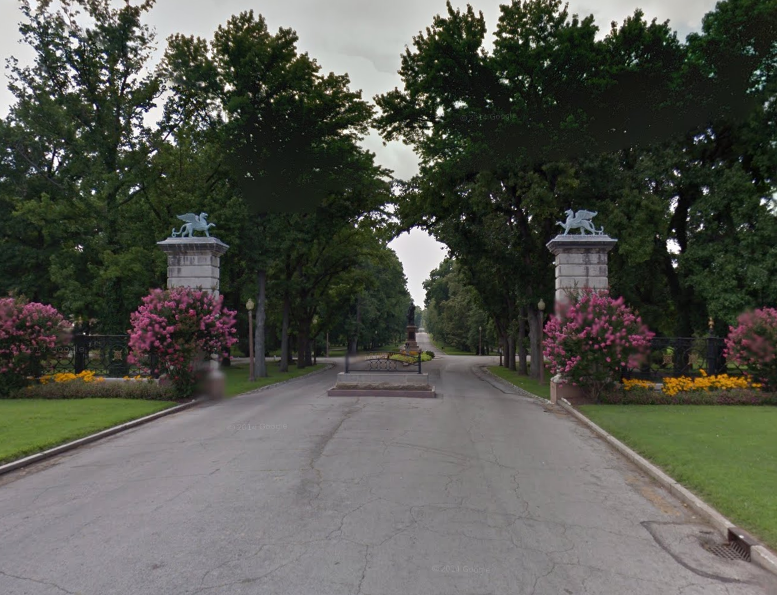



| Henry Shaw in a carriage at the East Gate about 1880 St. Louis Globe-Democrat, October 1969 |
East Gate as seen today, from Google Street View |

Tower Grove Park in the southwestern part of the city, occupying almost the whole of plates 65 and 94, was acquired in October, 1868. The land was a donation from Henry Shaw, Esq., and comprises altogether about 350 acres. The original tract, as given by Mr. Shaw to the city, contained 276 acres, a strip of two hundred feet on the north and south sides having been reserved for his own use. Mr. Shaw has since signified his intention of giving this strip also to the city, and it may therefore be considered a part of the park.
The first commissioners appointed to layout, beautify and improve the park, were James S. Thomas, Charles P. Chouteau, Adolphus Meier, Judge Wm. Furguson, and Henry Shaw, who also held the position of comptroller. Work was commenced in the fall of 1868, and continued from year to year, as appropriations were made by the city for this purpose. The park, from the east gate on Grand Avenue, to the west side, is one mile and a half in length, and from north to south, it is a quarter of a mile in width. The carriage-drives are four miles altogether, and the "walks," or graveled paths for pedestrians are, in all, about four miles in length. The road-bed in this park is probably as fine as any in the world, being made of the best material, and costing at the rate of $60,000 per mile. There are three gate-houses, the superintendents' houses, ten well and summer-houses, and two pagodas, one of which is fitted up for a music stand.
There are in the park forty varieties of spruces and pines, both native and foreign; and all of the best varieties of native and foreign shade trees. On the north and south sides is a growth of arbor vitae), which makes a fresh and pleasant border. Sewers and drains run through the grounds, and every portion is amply supplied with pure water from pipes connecting with the Compton Hill Reservoir. There are stone bridges at different points, rustic bowers scattered here and there, and iron seats at convenient places for visitors to rest themselves on. In the west end is a pond, and on one side of it a pile of stones, constructed so as to resemble a ruined fortress.
The park has cost, from the beginning of the work to the present time, between $450,000 and $500,000 in the way of improvement and ornamentation. The city appropriates $25,000 each year to keep it up and continue improvements. Mr. Henry Shaw, the generous donor, has, from the beginning, devoted much of his time gratuitously to the work of superintending the park, and adding to its beauty and attractiveness. All the work in and around the grounds is under his supervision.

Pictorial St. Louis